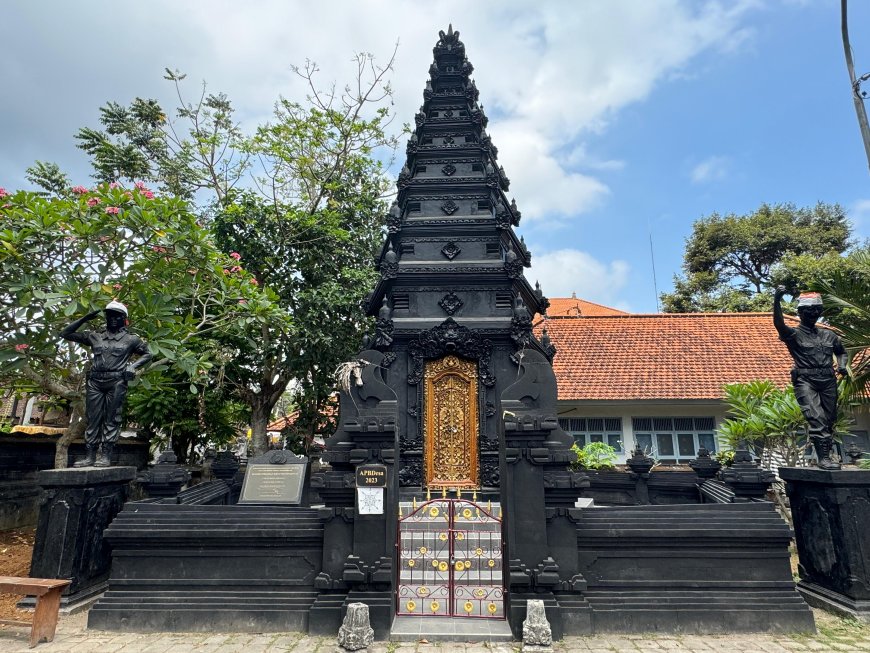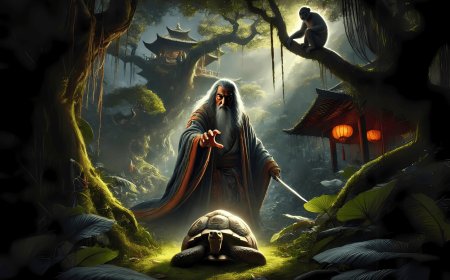Unveiling the Story of the Sukra and Sukri Monument in Penarungan Village: A Forgotten Cultural Heritage
Two Japanese soldiers, Mutswiso and Harraki, aided Indonesia's independence struggle in Penarungan Village, Bali. They trained local fighters and strengthened the weaponry. Mutswiso was killed while preparing aid, and Harraki died in a major battle in 1946. Both were cremated according to Hindu rites as per their request. The Sukra and Sukri Monument was built to honor their sacrifice.

Indonesia, the country we love, has gone through a long history filled with bloodshed in its struggle for independence. Heroes from various regions across the archipelago played a major role in achieving Indonesia's independence. One of the lesser-known heroic stories took place on the island of Bali, specifically in Penarungan Village, Mengwi District, Badung Regency. In this village, there were recorded hundreds of fighters, consisting of trained civilians, who fought against the Netherland Indies Civil Administration (NICA) during the post-World War II era. This story begins with the involvement of two Japanese soldiers who surrendered after their country's defeat at the hands of the Allies. After their surrender, the two soldiers, named Mutswiso and Harraki, decided to assist the Indonesian people's struggle for independence, particularly in Penarungan Village. They collaborated with local forces to strengthen the resistance, especially in aiding the forces of I Gusti Ngurah Rai, based in Marga, Tabanan.
Monument of Sukra and Sukri (Source: Personal Collection)
According to the Head of Penarungan Village, Ni Wayan Kerni, the two Japanese soldiers were initially found by the residents of Banjar Umopoh Penarungan. The villagers saw them confused in one of the huts while waving a white flag as a sign of surrender. The first Head of Penarungan Village, Ketut Receh, who was also the Head of the War Fighters Headquarters in Penarungan, received the report and immediately took action. One brave intelligence fighter approached the two Japanese soldiers and invited them to join the forces.
Because they were found on a Friday, or Sukra in the Balinese language, Ketut Receh gave them Balinese names. Mutswiso was named I Wayan Sukra, while Harraki was named I Made Sukri. From here, their journey began in assisting the Balinese people's struggle in Penarungan Village and its surroundings. Their involvement was not merely symbolic. In addition to training fighters who came from various areas like Blumbungan, Sibang Village, Badung, Mutswiso and Harraki were also responsible for arming the fighters in Baha Village, Mengwi District. In November 1946, Headquarters W I was ordered to assist the battalion led by Lieutenant Colonel I Gusti Ngurah Rai in Marga, Tabanan.
In this mission, Mutswiso and Harraki divided their roles. Mutswiso prepared weapons and troops at Headquarters W with I Ketut Receh. However, a tragic fate befell Mutswiso when his whereabouts were discovered by NICA soldiers. He died before being able to send reinforcements to Ngurah Rai. Meanwhile, Harraki managed to reach I Gusti Ngurah Rai's forces in Marga. Unfortunately, in a major battle in November 1946, Harraki also perished alongside hundreds of other fighters defending Bali from the NICA attack.
Monument of Sukra and Sukri (Source: Personal Collection)
There is something extraordinary about the story of these two Japanese soldiers. Before his death, Harraki had requested that Ketut Receh ensure both he and Mutswiso be given Hindu ceremonies if they died in battle. This request was honored by the Balinese fighters, who respected their final wish. After their deaths, the ashes of Mutswiso and Harraki were placed in a monument that once stood at a crossroads in Penarungan Village. However, in 2005, the monument was moved to the center of Penarungan Village's government offices, where it stands to this day as a tribute to the sacrifices of these two Japanese soldiers who gave their lives for Indonesia’s independence.
This story shows how complex Indonesia’s independence struggle was, involving not only the sons and daughters of the archipelago but also individuals from other nations who sincerely helped in this sacred fight. The sacrifices of Mutswiso and Harraki offer important lessons about solidarity and the spirit of freedom that transcends national boundaries. Penarungan Village will always remember these two names as part of the great history of the Indonesian nation.
































































